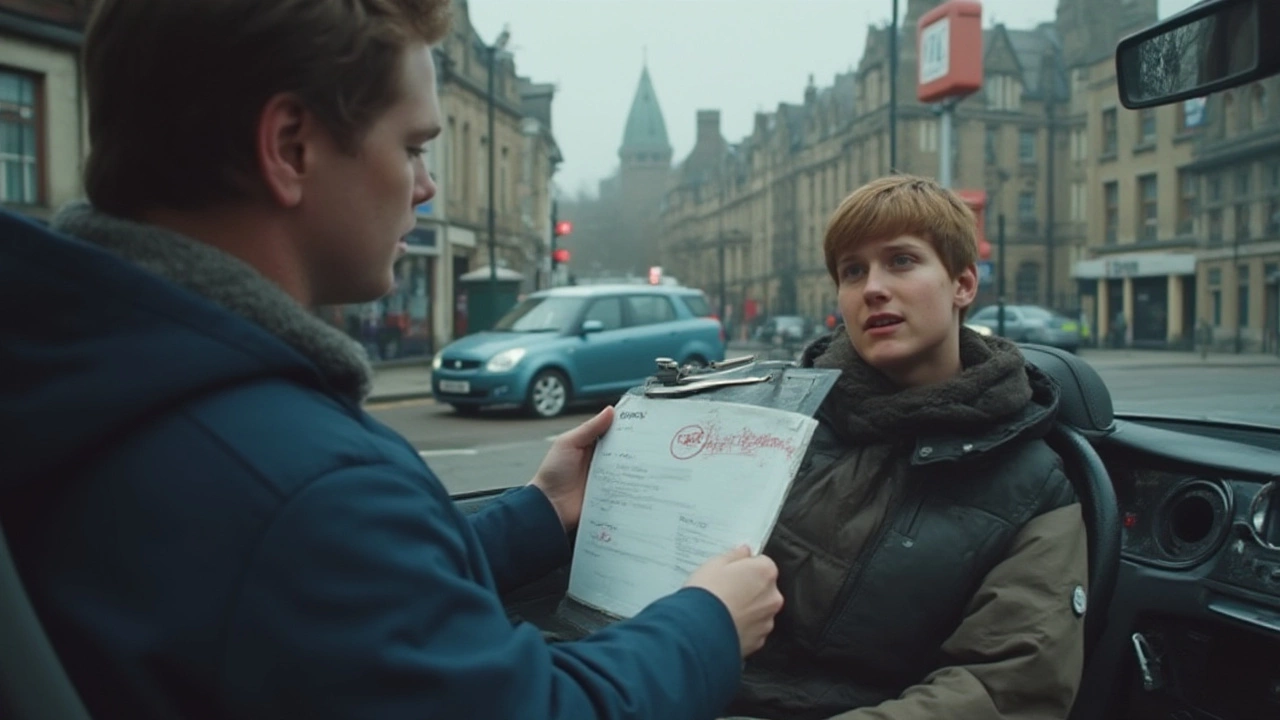DMV Driving Test Mistakes: What to Watch Out For
If you’ve booked a DMV road test, you probably feel a mix of excitement and nerves. That’s normal, but the real danger isn’t the nerves – it’s the small slip‑ups that add up and turn a good run into a fail. Below you’ll find the most frequent mistakes learners make, plus clear ways to dodge them.
Top 5 Mistakes That Trip Up Most Learners
1. Forgetting to check mirrors regularly. Inspectors love to see you glance at your left, right, and rear mirrors every few seconds. If you only pop a mirror when you’re about to change lanes, you’re signaling that you’re not scanning the road. Make it a habit: mirror, signal, check, then move.
2. Rushing the start and stop. Many candidates slam the accelerator or brake the moment the test begins. A smooth, controlled start shows you can manage the car’s power. Likewise, come to a gentle stop before a stop sign or traffic light – a jerky halt screams panic.
3. Ignoring road markings. Whether it’s a solid line, a double yellow, or a pedestrian crossing, the rules are crystal clear. Rolling over a solid line or failing to give way at a zebra crossing is an instant fault. Keep an eye on the pavement as you drive; it’s as important as looking at other cars.
4. Poor positioning in the lane. Staying too close to the curb or drifting toward the middle can earn you a “position” fault. Aim to keep the car centered, giving yourself enough space on either side for safe maneuvering.
5. Inadequate observation at junctions. Before you turn, you must look left, right, and left again. Skipping any of these checks, especially at a roundabout, is a classic error that leads to a major fault.
How Many Major Faults Mean a Fail?
The DMV uses a simple fault system:
- Minor faults – you can collect a few without jeopardising the result.
- Major faults – one major fault usually means an automatic fail.
- Dangerous faults – these are the worst; they also cause a fail.
In practice, if the examiner notes a single major fault, the test is over. That’s why spotting the “big” mistakes early in your preparation is crucial. For example, repeatedly missing a stop sign or failing to give way at a pedestrian crossing is classified as a major fault.
So, how many can you afford? Zero. One equals a fail, two or three just adds to the disappointment. The goal is a clean sheet of minor faults only.
Here’s a quick cheat sheet to keep in mind while you’re behind the wheel:
- Check mirrors every 5‑7 seconds.
- Start and stop smoothly – think “waterfall” not “water pistol”.
- Obey every line and sign; they’re there for a reason.
- Stay centered in your lane – use the road markings as guides.
- Perform full observation at every junction – left, right, left.
Practice these habits during every lesson and even on short solo drives. The more automatic they become, the less likely you’ll commit a major fault when the examiner is watching.
Finally, remember the test isn’t a trick. The examiner wants to see that you’re a safe, confident driver. Treat each mistake as a learning point, not a disaster. With the right focus on these common pitfalls, you’ll walk out of the DMV with a pass and a smile.
- July 9 2025
- 0 Comments
- Rowan Cavendish
Automatic Fails on California Driving Test: What to Avoid for a Guaranteed Pass
Wondering what mistakes on your California driving test will get you failed instantly? This in-depth guide breaks down automatic fails, offers real test insights, and practical prep advice.
- Driving Lessons (41)
- HGV Training (31)
- Driving Test Tips (31)
- Driving Test Booking (26)
- Driving Licence Renewal (23)
- Driving Theory Test (21)
- Pass Plus Course (15)
- Driving Tips (15)
- Intensive Driving Course (15)
- Driver Licensing (14)
Categories
- December 2025 (12)
- November 2025 (13)
- October 2025 (21)
- September 2025 (5)
- August 2025 (8)
- July 2025 (30)
- June 2025 (30)
- May 2025 (30)
- April 2025 (31)
- March 2025 (30)
- February 2025 (28)
- January 2025 (34)
Archives
- driving lessons
- driving test
- driving tips
- intensive driving course
- driving test tips
- HGV training
- learn to drive
- driving theory test
- driver training
- driving test booking
- pass driving test
- HGV driving
- road safety
- driving license renewal
- Virginia driving test
- learner drivers
- safe driving
- Virginia driver's license
- driving license
- learning to drive

